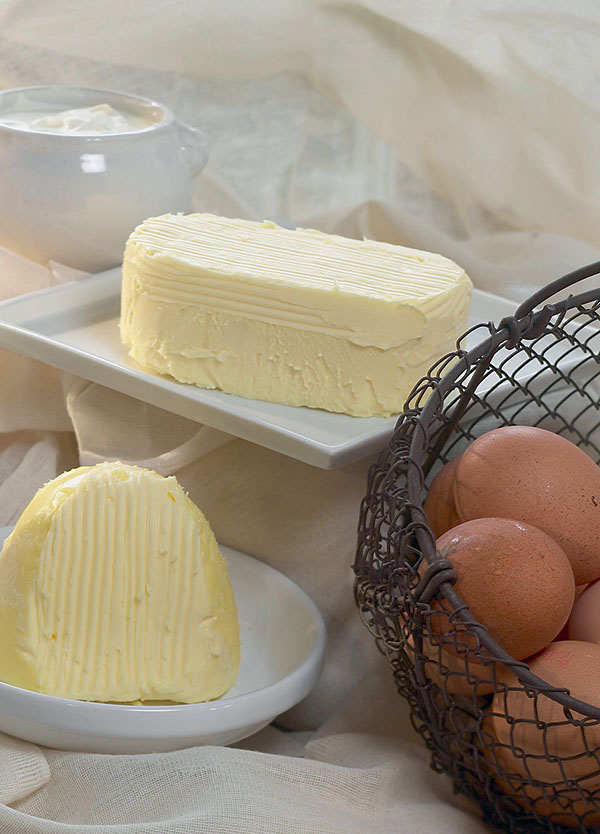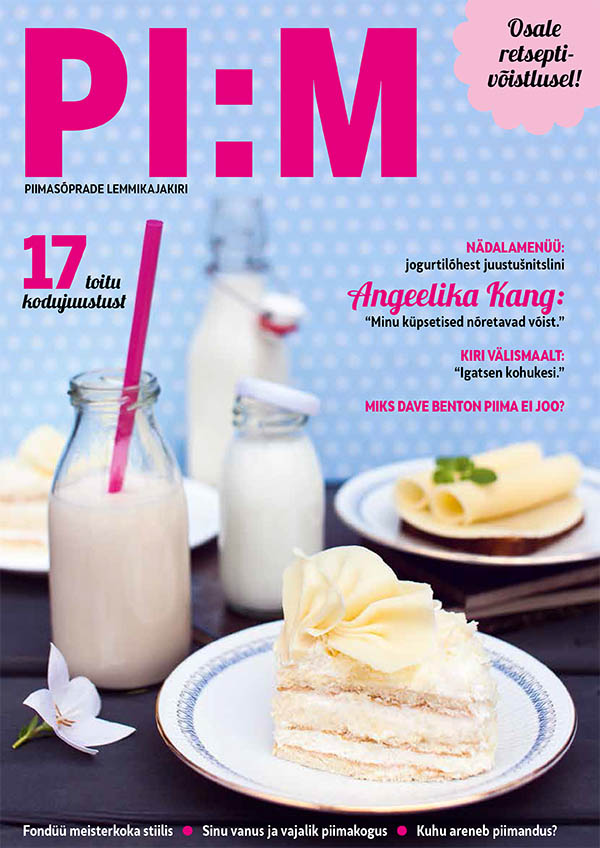milk | butter | kefir | cheese | yogurt | sour cream | buttermilk | sour milk | cottage cheese | curd | pudding
 What is the Composition of Butter?
What is the Composition of Butter?
Biochemically, butter consists of at least 80% of milk fats and less than 16% of water. Fatless dry matter constitutes up to 2% of the composition of butter. The latter comprises milk proteins, milk sugar, mineral compounds, vitamins, pigments and aroma substances.
The milk fats in the butter determine the quality of the product. High-quality butter has to fall within the limits of two requirements. In warm places (at a temperature of 20–25 °C) a piece of butter has to maintain its characteristic consistency and may not lose its shape.
In moderately cold temperatures (at a temperature of 10–15 °C), butter has to be sufficiently plastic ‑ it can’t splinter or be crumbly.
The best advice, to store butter at 2–6 °C, ensures that the product stays in good condition for at least a month and a half. When storing butter, the biggest enemies are warmth, oxygen and light that finally cause fatty acids to become stale, making the butter bitter.
In terms of diet there is no need to be afraid of milk fat. The fat content of butter is well assimilated in the gastrointestinal tract, as the fatty acids in butter are characterised by a relatively low melting temperature.
When you eat about 14 grams of butter (e.g two thick slices of bread with butter, or have a large ‘butter eye’ in your porridge), your body assimilates several vital nutrients. From this amount of butter the gastrointestinal tract gets about 7 grams of the saturated fatty acids that the human body uses very well – mostly for energetic and structural purposes.
It’s worth knowing that these 7 grams include almost 1 gram of the short-chain saturated fatty acids the myocardium needs for functioning in normal circumstances. At the same time, 14 grams of butter gives our body 2.4 grams of mono-unsaturated, and 0.5 grams of poly-unsaturated fatty acids that have a good influence on health in terms of the functioning of the human organism.
And last but not least, all those fatty acids are natural, not chemically altered, that cannot be said about several food products that are used as butter substitutes. This portion of butter brings about 30 milligrams of cholesterol to the gastrointestinal tract, of which about one third is assimilated so there are no problems with cholesterol. On the positive side we should also mention the small lecithin content in butter. Taking all this into account, the fat content of butter is good for people!
In addition, butter has a beautiful golden yellow appearance, it melts in the mouth, and has a nice aromatic smell. As butter is mostly comprised of milk fat, it is very rich in calories. For example, when you eat a 14-gram piece of butter, your body gets a little less than 100 calories of food energy. Of course, the more water butter contains the lower its fat content.
The protein content of butter is relatively low, only around 1%. There is a rule that the lower the fat content of butter the higher the protein content of the product. We should stress though that the protein in butter has a favourable aminoacidic content. Carbohydrates are mainly in the form of lactose (milk sugar) in butter, but their quantity is rather small, again around 1%. So there are no problems with lactose either.
All flavoured butter based spreads (sweet butter creams, chocolate butter containing cocoa, honey butter) have a higher carbohydrate content than pure butter. Genuine butter mainly includes the fat-soluble vitamins A, D and E, but their quantity depends on the breed of the cow, their housing conditions, the season, and fodder.
Butter owes its beautiful yellow colour to a fat-soluble pigment – natural beta-carotene. Its content also depends mainly on the fodder of the dairy cattle. Besides being beautiful to the eye, beta-carotene is useful for the human body as well, specifically, our body synthesizes vitamin A from it.
Water-soluble vitamins in the water content of butter have traces of some representatives of the B-group vitamins. Butter does not contain vitamin C, but does have some element of mineral compounds, the rest of them having been transferred to the contents of buttermilk.
Table salt is added to butter for preserving purposes, and the salt content in the more salty varieties may be up to 1%. Consumers can always choose the less salty brands. It’s good to know that genuine butter is a product that does not contain any additives.
Share ►


